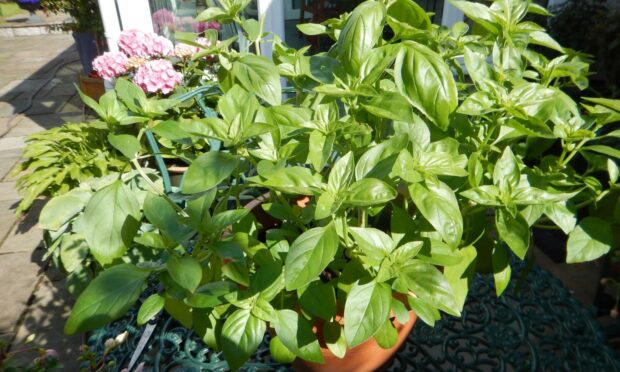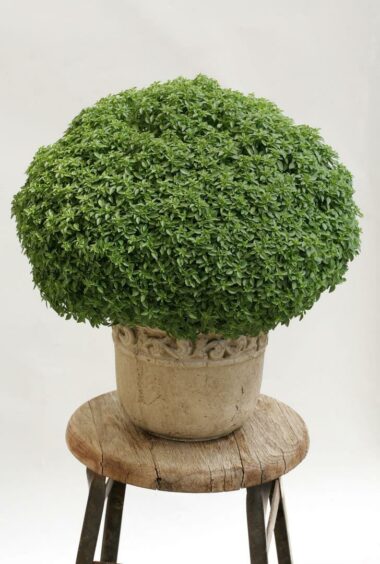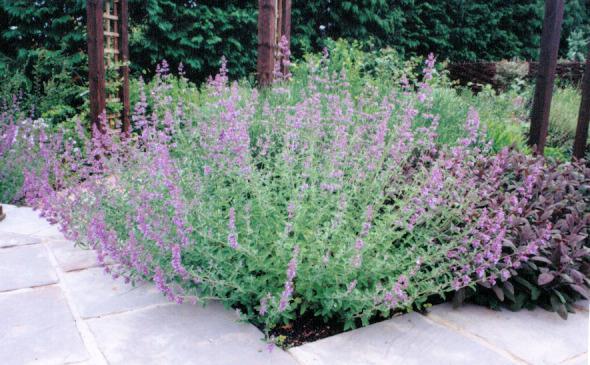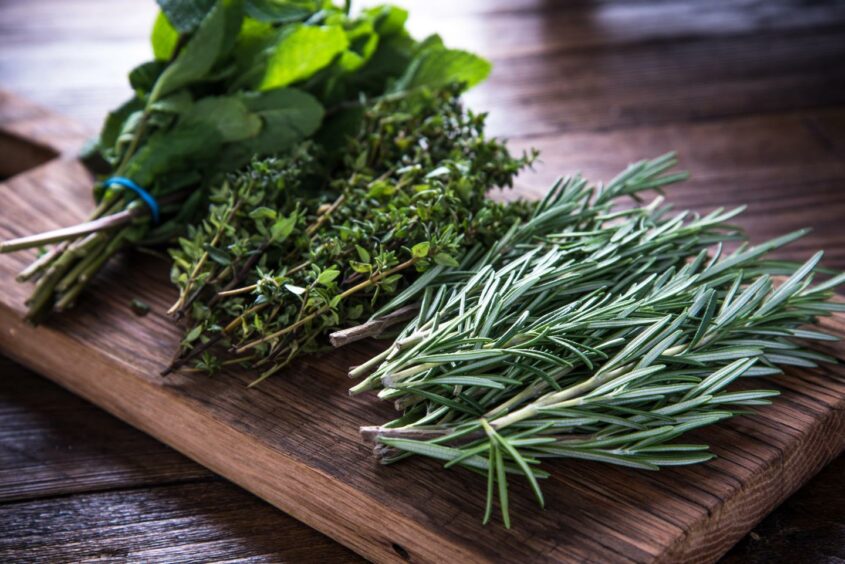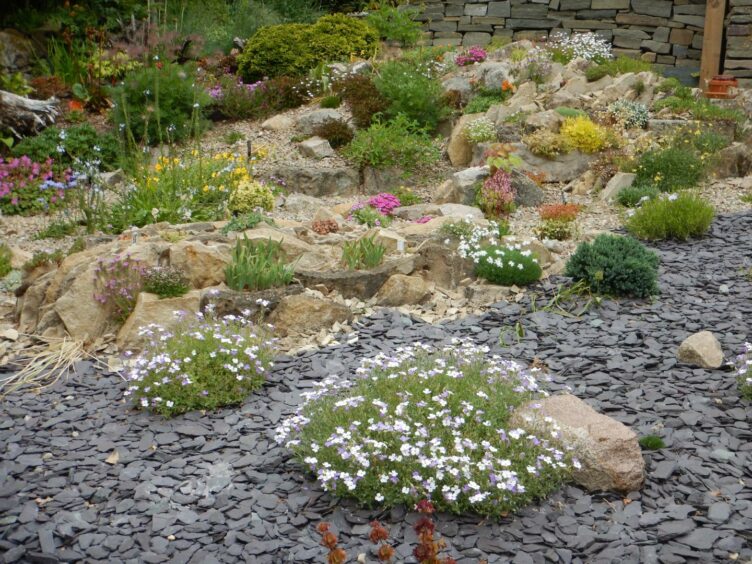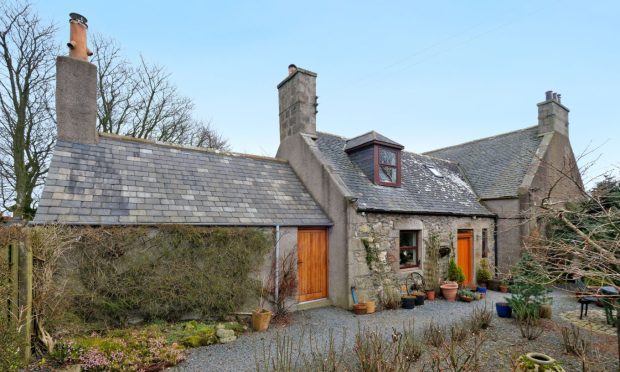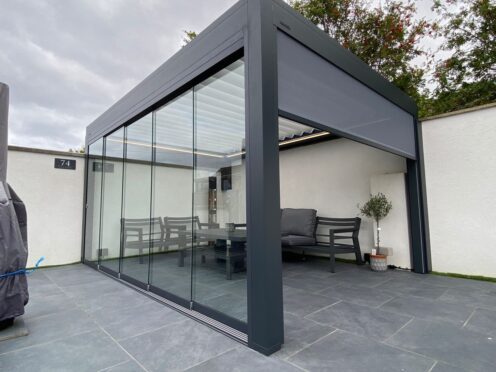“When are you going to give us beginners a few words of advice about setting out a herb garden, James?”
I knew I was in trouble by the tone of voice and the use of my full Christian name.
Fortunately it was the voice of an old chum I bumped into when out for Sunday lunch, not the time or place to start a discussion on herb gardens.
Herbs at home
Truth to tell, we don’t use many herbs at home and what we need – parsley, is accommodated in the veg plot.
For the likes of lavender and sage – they are happy in the flower border. I did promise to offer a few thoughts on the subject.
That exchange did waken me up to the fact that more and more people are growing herbs or wish to “have a go”.
In part, this must be due to the inordinate number of cookery programmes being screened on a number of TV channels nowadays, with herbs being featured consistently.
Gardening shows
In days of yore, when I regularly visited gardening shows like Hampton Court, Chelsea and Gardening Scotland, I always admired the herb displays from Cheshire Herbs, Jekka McVicar and the like, they were quite stunning but I was seeing them as plants, not their influence on a pot of stew.
The fact is, there must be a lot of people using herbs nowadays because these specialist firms seem to be prosperous enough.
During my years spent in Shropshire, I was involved in planning and planting several herb plots, mainly in school gardens but at the Walford Agricultural College, we had a demonstration garden including a rather fine herb garden which I rather liked.
During my Beechgrove Garden days, in our “problem garden” slot, from time to time I was invited to reconnoitre sites for herb gardens.
Cooking
One young, new house owner declared that she regularly cooked with herbs and wondered where she might locate a herb garden in the currently “vacant” plot.
My short answer was – as near the kitchen door as is practical. The real answer being a well-drained, open site which gets the sun most days and where herbs like basil, chives, sage and mint will thrive, but emphasising that some of the less hardy perennial types like fennel are better grown in containers to be located on a sunny terrace and moved into a porch, greenhouse or cold frame from October to April.
Shrubby types like bay, lavender and rosemary will be happy in a sunny but sheltered border. If you garden on a heavy soil however, many would thrive better if container grown.
Back now to that Shropshire garden and how it was set up.
Percy Thrower
Incidentally, quite near the Farm Institute was a house called The Magnolias, home of the late Percy Thrower, the first of television’s “gardening gurus”.
In my view, he was to set a standard which has seldom been beaten. Back to the herb garden.
Our demonstration area was used for school pupils and at weekends, courses for amateur gardeners.
The challenge was to present herbs in an attractive setting whilst coping with the invasive qualities of some.
We chose a rectangular plot measuring 10m x 6m in an open, flat, free-draining area within the garden.
A planting plan was created and at the appropriate spacing we dug holes deep enough to be able to sink five-gallon metal drums which had been thoroughly cleaned and the top and bottom removed.
They were deep enough so that only three inches protruded above the prepared surface. Nowadays we would use plastic drums.
When all the drums were in place, we proceeded then to cover the entire intervening surface with crazy paving, using broken slabs.
The spaces between and around each drum were pointed using a concrete mix then, having allowed the cement to set properly, we were able to return to the site, fill the drums with a compost mix, which consisted of 60% of the original soil, 15% well-rotted organic matter and 25% rough grit.
You will note that we didn’t add fertiliser, the soil component being rich enough.
If I were to do the same again, I would dispense with the paving, and use a strong landscape fabric topped off with gravel or slate.
I have seen this technique used to accommodate rock garden plants.
The whole point of the exercise was to prevent the invasive species from spreading.
Generous spaces
With generous spaces left between the planted specimens, there is then an opportunity to place pot-grown specimens in the bigger gaps, giving the area a rather attractive appearance, removing them to their winter quarters in late autumn.
